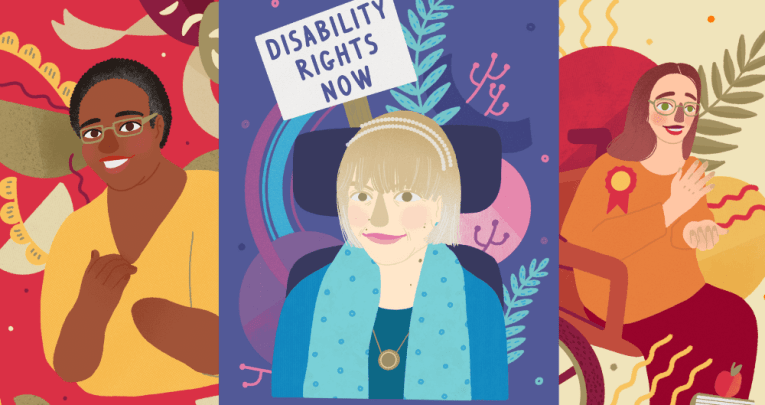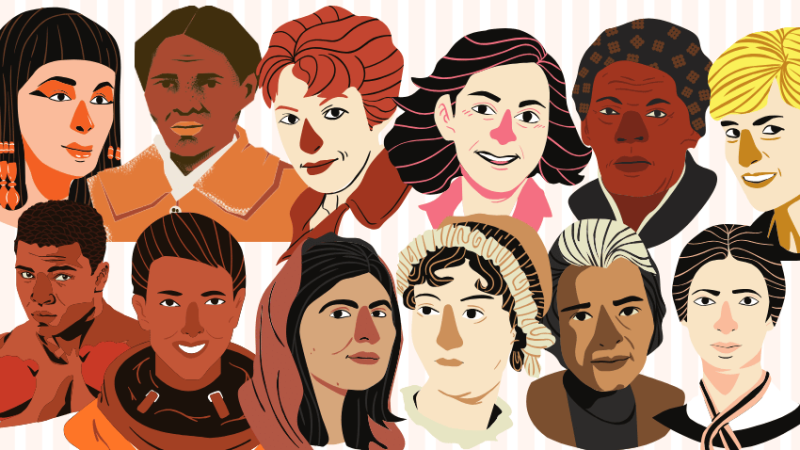10 great primary books to delve into history
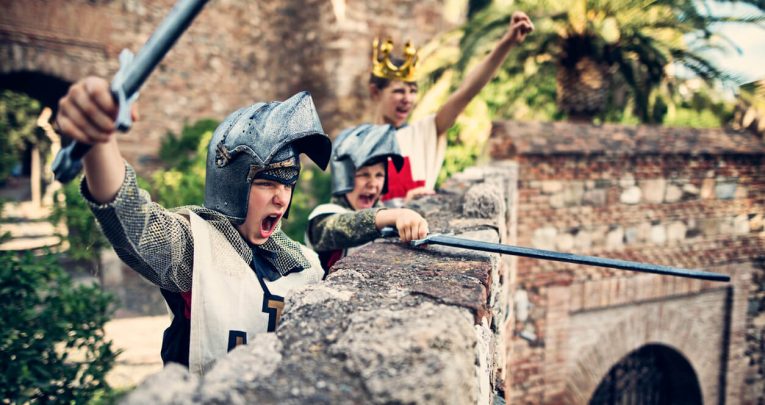
From the Stone Age to WWII, these memorable children’s stories are a rich source of inspiration for writing, discussion and discovering more about the past
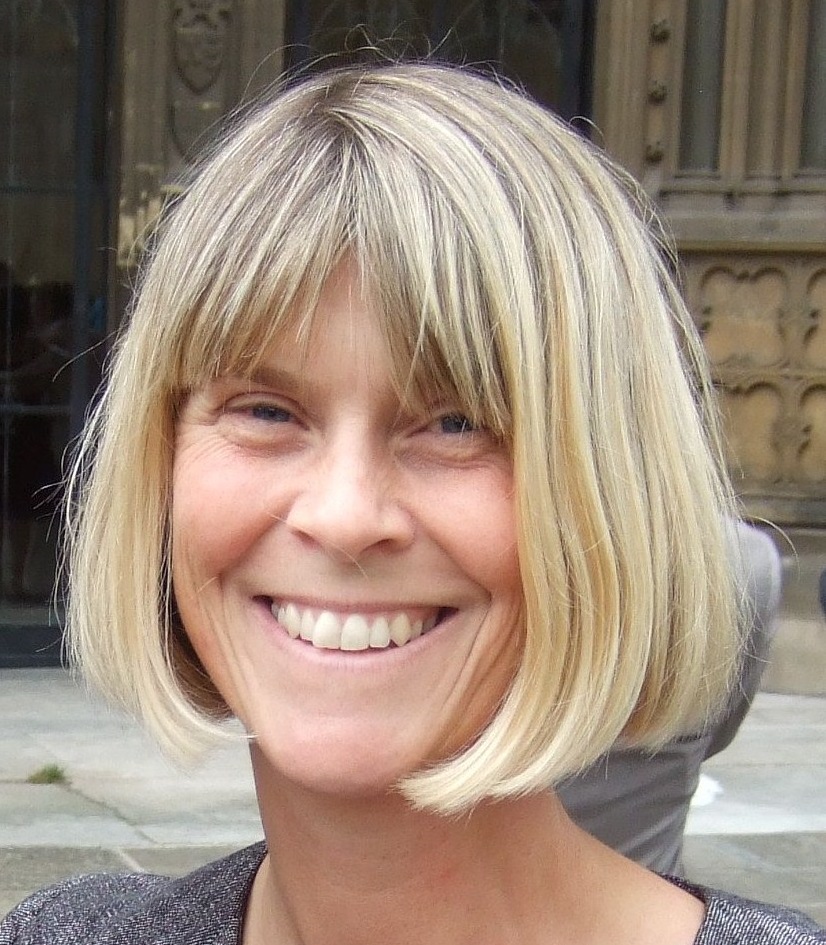
- by Carey Fluker Hunt
- Creative learning consultant, writer and former teacher Visit website

FOUNDATION STAGE
1 | Peepo
Janet and Allan Ahlberg (Puffin)
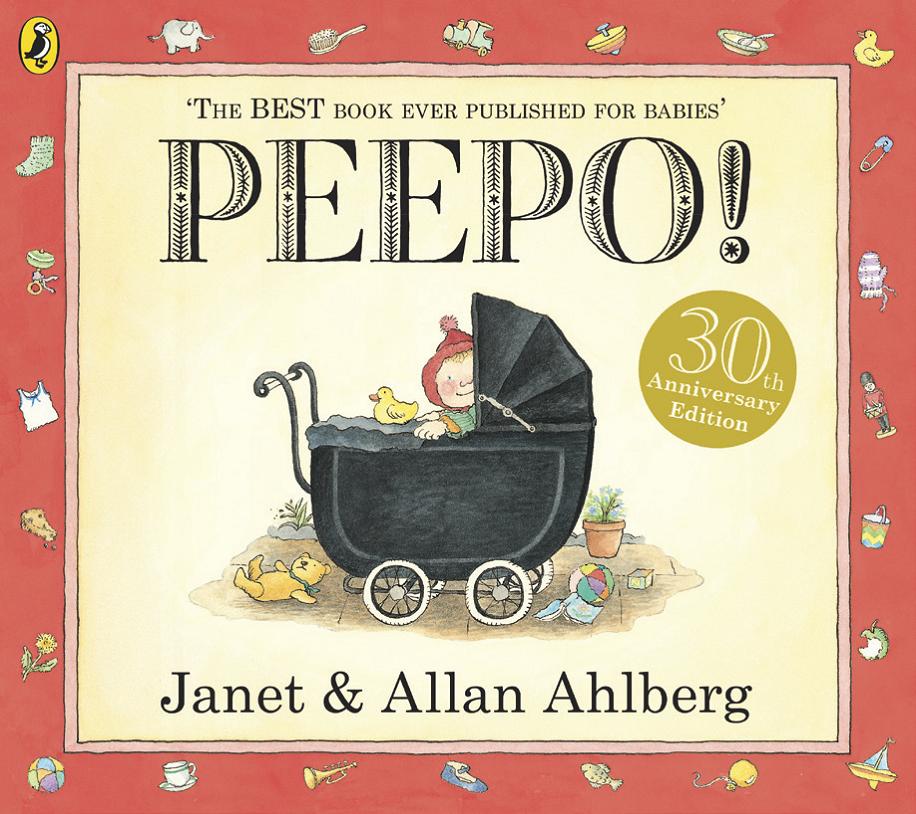
What’s the story?
This much-loved picturebook with its peephole and rhyming text depicts scenes of family life during WW2 and will prompt discussions about families and babies as well as ‘then and now’.
Thinking and talking
The text tells us what the baby’s looking at (his family, his teddy) but the pictures show us everything. What do your children notice that the baby doesn’t?
What’s similar and what’s different about the baby’s home and your children’s?
Try this…
- What do children remember about being babies / toddlers? What can their families tell them? Relate to the idea of personal history and draw simple timelines.
- What does Peepo tell us about babies and their needs? Invite a parent and baby to visit. Collect ‘baby things’ and compare with those in Peepo. Draw and write about your objects for a class display.
- Make ‘Peepo cards’ (plain card with a 5cm hole) and use these to examine the world around you. Peepholes are also great for isolating details in paintings – use historical pictures of families in domestic settings for a Peepo link!
2 | Milly-Molly-Mandy Stories
Joyce Lankester Brisley (Macmillan)
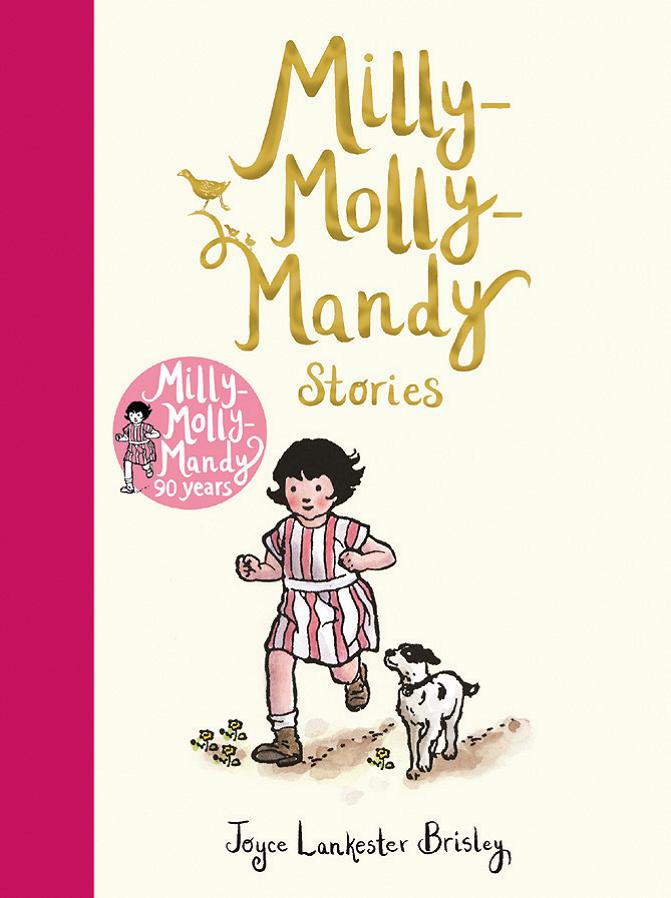
What’s the story?
Full of warmth and detail, these stories transport us to a time when a penny offered an exciting spending opportunity and five-year-olds ran errands all alone.
Milly-Molly- Mandy’s rural 1920’s world vanished long ago, but this book brings it to life again in a way that children enjoy and can relate to.
Thinking and talking
Which story do you like best, and why? Do they remind you of things that have happened to you? Examine the pictures and discuss Milly-Molly- Mandy’s world. How does it compare to the world in which you live?
Try this…
- Look at the picture-map of Milly-Molly-Mandy’s village, then work together to make a 2018 picture-map of your local area. What’s similar and what’s changed?
- Invite an older visitor to talk about their childhood. Draw Milly-Molly-Mandyinspired pictures to illustrate the stories you’ve heard.
- List the traditional pastimes in this book, then tick them off as you try them – growing mustardand- cress, baking a patty-pan cake, eating bread sprinkled with hundreds-andthousands, competing in a spoon-and-potato race.
Key stage 1
3 | Camille and the Sunflowers
Laurence Anholt (Frances Lincoln)
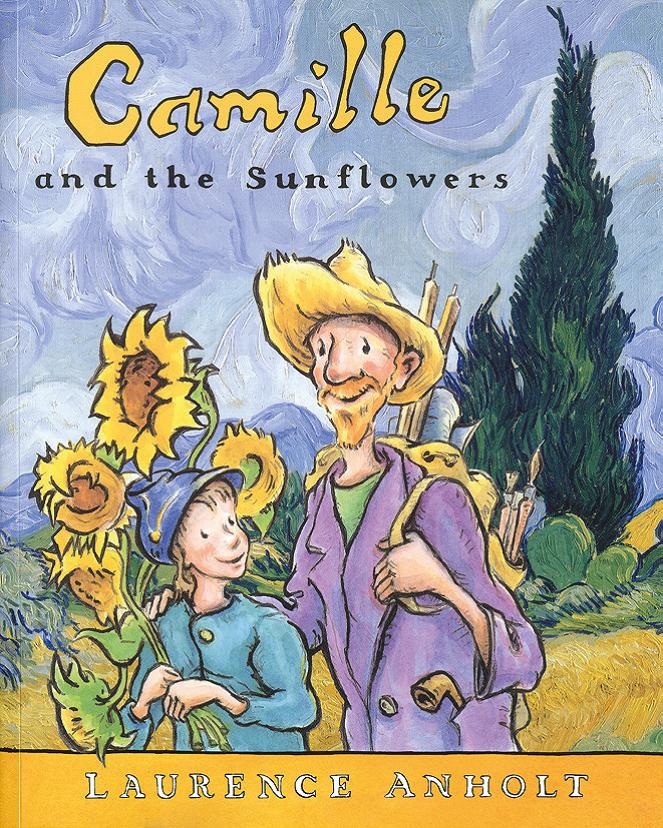
What’s the story?
This classic picturebook offers a gentle yet thought-provoking introduction to Van Gogh’s work and gives readers a taste of everyday life in nineteenth-century France.
There are plenty of references to van Gogh’s artwork to spot, along with reproductions of Sunflowers and five portraits of the Roulin family.
Thinking and talking
Why did the children throw stones at Vincent? How did Camille try to help? What would you have done?
Look at reproductions of Van Gogh’s work in this book alongside paintings that were popular in 1890. What was new and different about Vincent’s paintings? Why do you think people didn’t like them? Find out more about his pictures.
Try this…
- Look the paintings Van Gogh’s Chair and The Bedroom. By painting ordinary, everyday furniture and objects, Van Gogh made them special and helped us imagine the world he lived in so long ago.
- What would it have been like to live in Van Gogh’s room? How is it different from your bedroom, and how is it similar?
- Have a go at painting a picture of an ordinary modern chair (your school chair?) using colours and techniques inspired by Van Gogh.
4 | Stone Girl, Bone Girl: The Story of Mary Anning
Laurence Anholt and Sheila Moxley (Frances Lincoln)
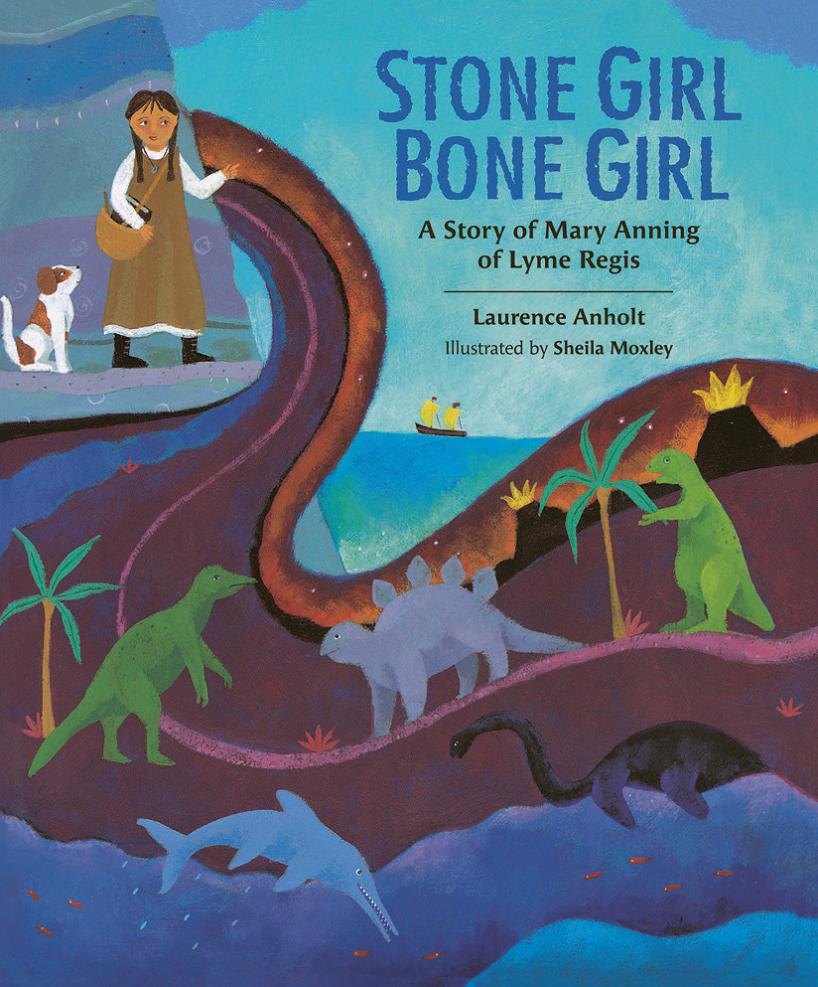
What’s the story?
Mary Anning was born in 1799 in Lyme Regis, where she hunted for fossils and, at the age of 12, discovered the world’s first Ichthyosaurus.
This beautifully-illustrated picturebook has a substantial text that encourages empathy as well as interest.
Thinking and talking
Why was it unusual for a girl to be a fossil-hunter in Mary’s time? What were girls supposed to do instead of fossil-hunting? Are there times when you have to resist pressure? How do you know whether to listen to other people or follow your own ideas?
Try this…
- Collect fossils and pictures to create a display. Label with names and approximate ages. How big is a hundred? A thousand? A million? Can you find a way to make the timescales more meaningful?
- Cabinets of Curiosities like the one Pepper made were very popular at this time. Create your own Cabinet and fill with historical objects you’ve collected or chosen. Write and illustrate a guidebook to your exhibition.
5 | Town is by the Sea
Joanne Schwarz and Sydney Smith (Walker)
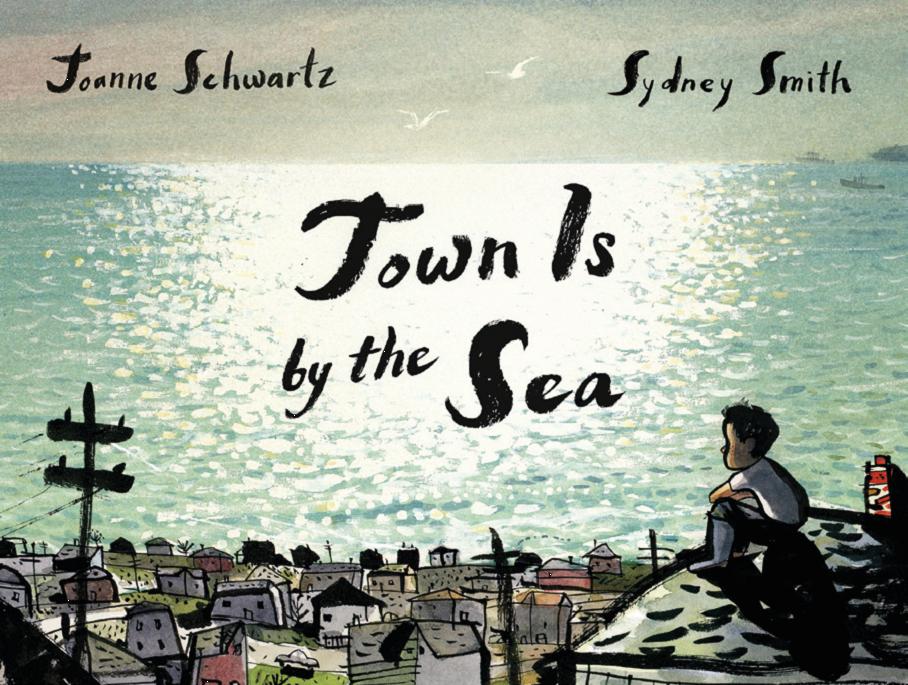
What’s the story?
Narrated by a young boy as he plays on the swings and runs errands, we share his clifftop experience of a glorious summer’s day.
The sunlight is sparkling across the sea, but deep beneath the water is the boy’s father, digging for coal… how safe is he? Will he come home?
Set in a coastal mining town in the 1950s, this light-filled picturebook won 2018’s Greenaway medal and offers family warmth and historical insights along with real depth and grit.
Thinking and talking
What does this book tell us about mining? The 1950s? How is the boy’s life different from your own and how is it similar?
Smith’s illustrations add a huge amount to the text. How do they make you feel? What can we learn from them? How does Smith achieve this impact and effect? Look at details, invite observations and help children notice things like viewpoint and framing; light and shade; Smith’s colour palette and the quality of his line.
Try this…
- Make a timeline showing everything that happens to the boy, and what he notices. Use the book’s text to structure writing about a day at home: When I wake up it goes like this…. First thing I see when I look out the window is… Which aspects of your daily routine would the boy recognise? Which have changed?
- Can your children remember Summer 2017? 2016? The boy in this book is talking about a summer long ago. Can anyone share memories of the 1950s? Chalk a timeline outdoors to show how many years have passed since then. Count the years in twos and fives and tens by jumping along it!
6 | Henry’s Freedom Box
Ellen Levine and Kadir Nelson (Scholastic)
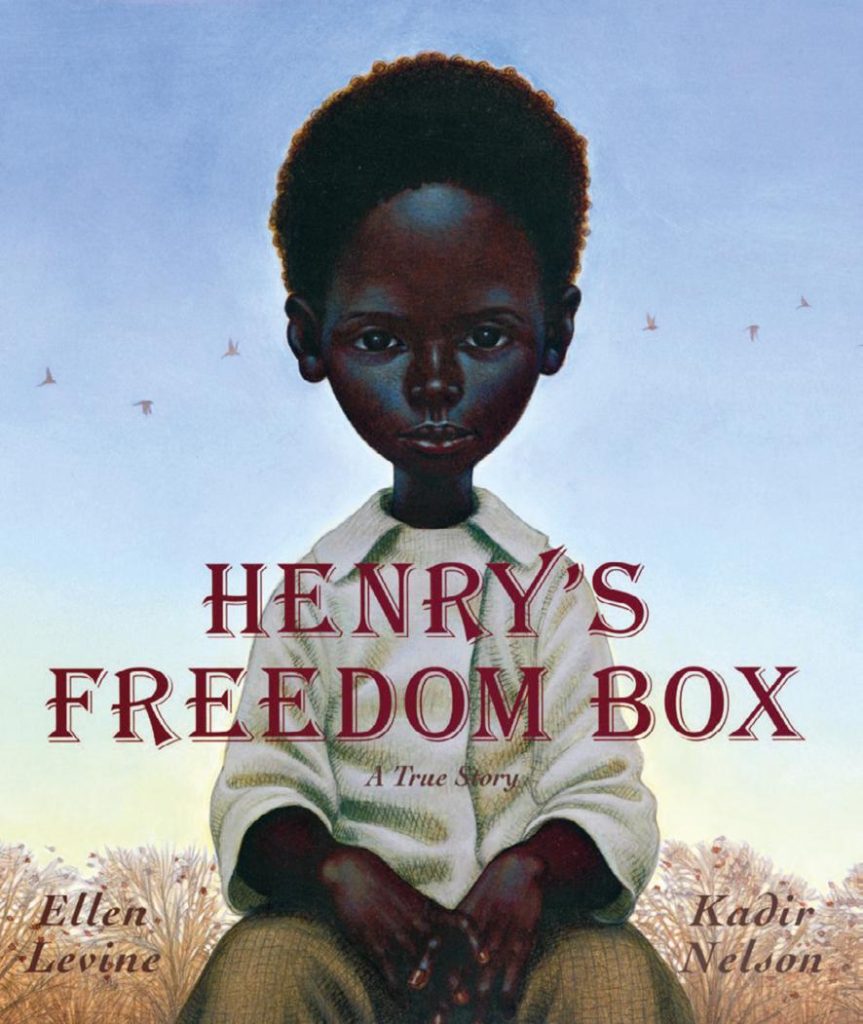
What’s the story?
“Henry Brown wasn’t sure how old he was. Henry was a slave, and slaves weren’t allowed to know their birthdays.”
Henry ‘Box’ Brown mailed himself to freedom inside a wooden crate using what became known as the Underground Railroad. In 27 dangerous and uncomfortable hours, he travelled 350 miles from Virginia, where slavery was legal, to Philadelphia, where it was not.
This award-winning and affecting picturebook tells a fictionalised version of Henry’s story in a way to which children can relate. It’s well worth sharing, but hard-hitting themes remain.
Thinking and talking
Discuss this book and the true story that inspired it.
What does freedom mean to you? Should people be free to do whatever they want? Are we free if we have to obey rules and laws? How can we make sure our laws are the right ones?
Try this
- Use sticky notes to add words describing the characters’ feelings to each spread. These will help you write an expressive account of events from Henry’s point of view.
- Examine the pictures for clues to what life was like in Henry’s time. Make a list of what you’ve learned and a list of your questions. Use non-fiction books and online sources to answer your questions.
- What laws do we have to protect people from slavery and discrimination? Talk about how you can make your class and school a fairer and better place for everyone.
KEY STAGE 2
7 | The Tin Snail
Cameron Mcallister (Corgi)
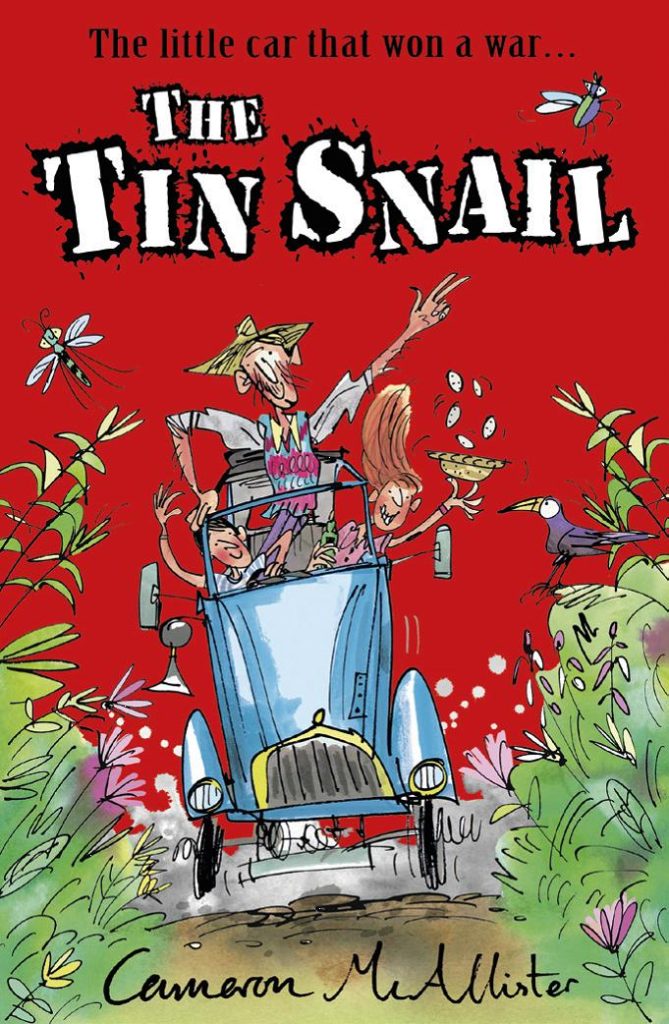
What’s the story?
Angelo has come up with a revolutionary idea: why not design a low-cost vehicle for a French farmer and his wife?
It would have to be capable of carrying two chickens, a flagon of wine and a dozen eggs across a field without breaking a single egg – and such a car would have to be hidden from the German Army, now occupying France. But with an entire village in on the secret, it might just be possible…
This exciting and unusual WW2 story is based on the true events leading to the production of the 2CV, Citroen’s much-loved low-cost car.
Thinking and talking
What does Angelo do that children wouldn’t usually be allowed to do today? What else tells you this story is set in a different time and place?
What is happening elsewhere in Europe during the events described in this book? How does the war affect Angelo and his friends?
Try this…
- Research car design and production through history and make a collaborative non-fiction book.
- Using commerciallyavailable and reclaimed materials/objects, design and build a machine capable of transporting an egg safely over a given distance.
- Design your ideal car!
8 | Wolf Brother
Michelle Paver (Orion)
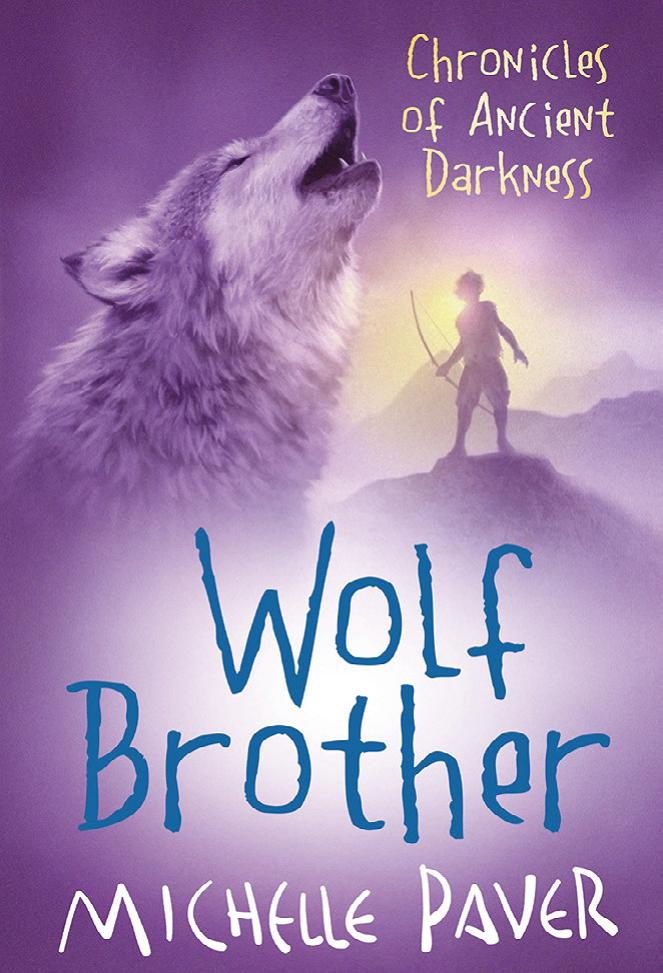
What’s the story?
This exciting story takes place thousands of years ago in a Stone-Age world so richly-imagined and distant from our own that the landscape seems almost sentient.
Alongside the elemental magics, though, are numerous practical details about how to survive and thrive in such a place – researched by the author during field trips among people who still use the techniques described.
Thinking and talking
In what kind of world does Torak live? What skills and knowledge does he need for survival?
Do you think it’s possible to accurately imagine living in the past? Does it matter whether we’re right or not?
Try this…
- Find out about experimental archeology and choose a hands-on project or challenge to explore – building shelters, hand-coiling a pot, creating and using natural pigments, grinding corn on a stone, cooking over an open fire. This kind of research informed Paver’s writing.
- Using a copy of the map, trace Torak’s journey, marking key events. What do we know about Neolithic Britain? (Look at Skara Brae, Waylands Smithy, West Kennet Long Barrow, Maeshowe, Stonehenge, Ring of Brodgar, etc) What might your area have looked like in Neolithic times? Use Ordnance Survey maps to help you create a Wolf Brother-style map. Imagine you’re alone in this landscape. What happens and how do you survive? Write an imaginative story based on your research.
9 | Sky Chasers
Emma Carroll (Chicken House)
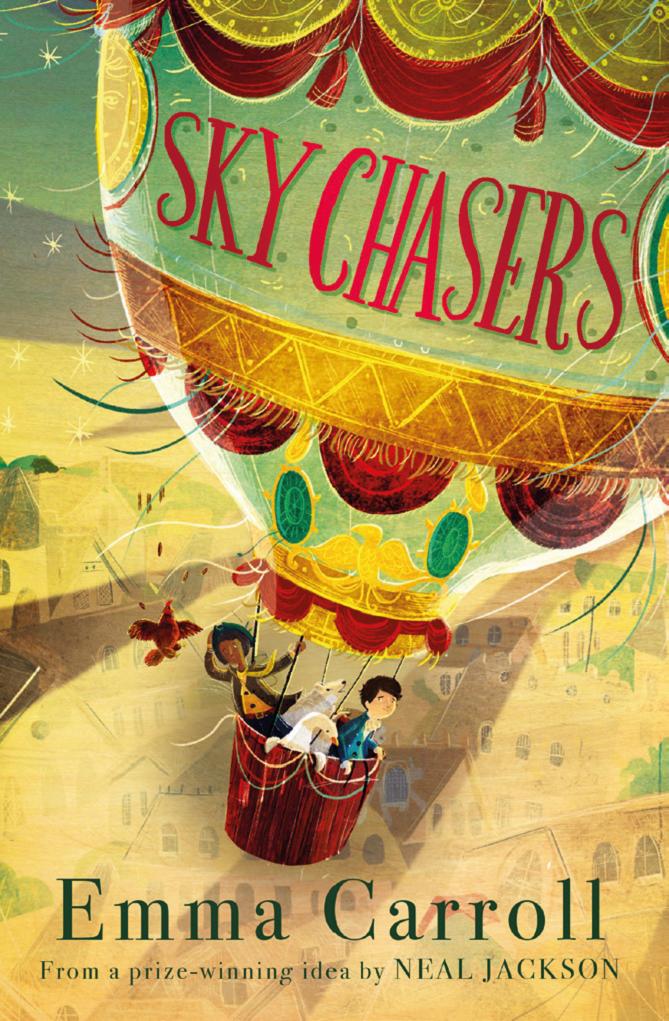
What’s the story?
When Magpie tries to steal valuable blueprints, she’s swept off her feet by an enormous air-filled balloon!
The experience changes her life forever, and soon she’s working for the Montgolfier Brothers instead of robbing them. Will they be able to satisfy the demands of King Louis and Queen Marie-Antoinette and fly a balloon over Versailles?
This exciting story is set in France in 1783 and won this year’s Teach Primary KS2 Book Award.
Thinking and talking
What did you like best about Skychasers? How did the author bring Magpie and Pierre’s world to life?
Try this…
- Talk about historical research and the way authors create realistic fictional worlds. What can we learn from Skychasers about life in eighteenth-century France? Research an historical period of your choice and write a story set in that time, making it as accurate (and exciting!) as possible.
- Find out about the Montgolfier Brothers and the history of manned flight.
- Using DT materials and found/recycled objects, design and construct an independent device capable of lifting a load safely off the ground (eg a balloon lifting a soft toy) or slowing the descent of a load from an agreed height and ensuring it lands safely (eg a parachute for an egg).
10 | Wonderstruck
Brian Selznick (Scholastic)
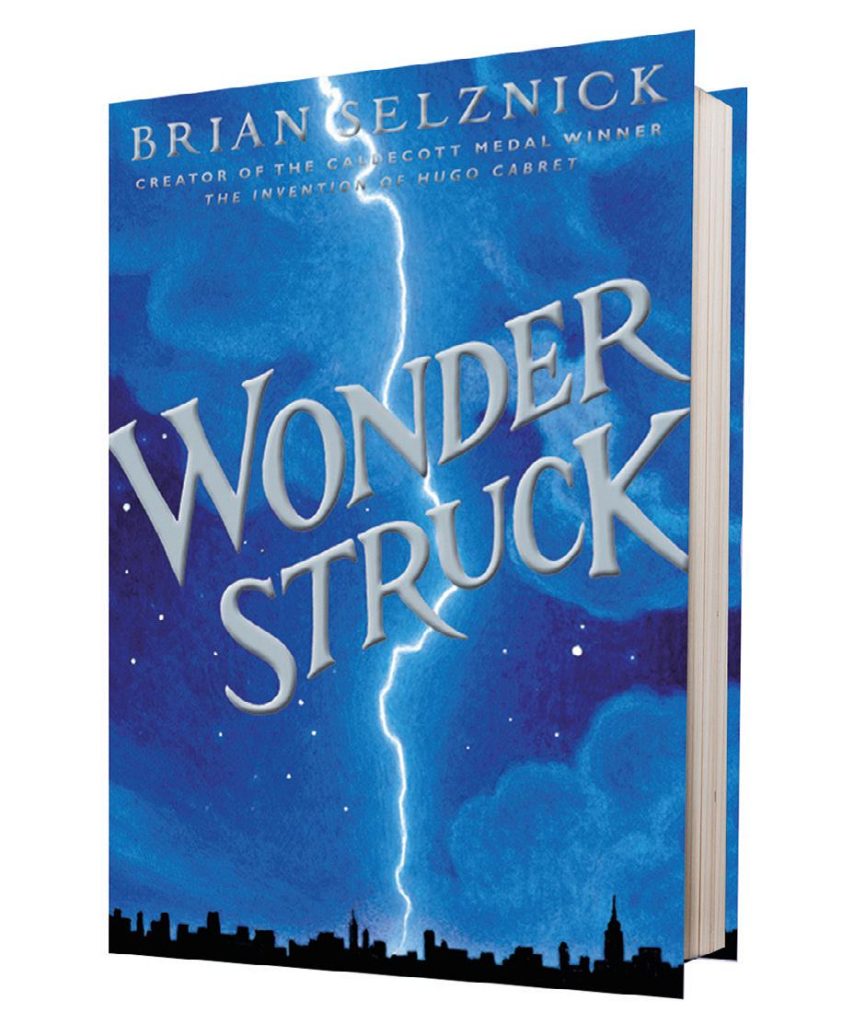
What’s the story?
stories are told in this mesmerising book – one in words and one in pictures, set 50 years apart – and as they progress, the connections become more obvious, until both stories come together in the most satisfying way.
Rose is deaf and desperately wants the love and attention of her distant mother, a silent film star. Ben’s mother dies in an accident and he wants to find the father he’s never known.
Themes include independence, loneliness and the importance of family and friends; the development of museum displays; theatre and silent films; deafness and sign language; architectural modelling. SPOILER ALERT: Rose is Ben’s paternal grandmother!
Thinking and talking
How does this book work? Look at the way the stories reference each other and eventually connect. How does Ben unravel the mysteries and make sense of everything? Does he need knowledge, skill or luck?
What does this book tell us about changes between 1927 and 1977? How has the world changed since your grandparents were children?
Try this…
- Create timelines showing what happens to Rose and Ben, and how their stories intertwine. Add notes about the historical events referenced in this book (the first New York blackout, the arrival of the ‘talkies..’) and other contemporary world events.
- In this book Ben learns about museums, and the art and science of curation. Follow Ben’s example and curate your own collections of objects (or pictures of objects) in boxes. What do your choices tell your audience about you and the times in which you live? Write about your objects and why you chose them.
- Construct models of buildings in your village, town or city. Create a 3D panorama like the one Rose built of New York, then research the history and architectural styles of your chosen buildings.
Carey Fluker Hunt is a freelance writer, children’s book ambassador and creative consultant.






